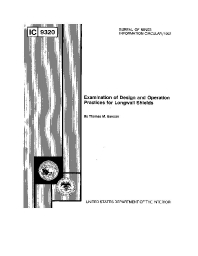 |
The success of longwall mining can largely be traced to the development of powered roof support systems. The most significant improvement in powered support design has been the shield support, which improved kinematic stability and promoted the application of longwall mining in difficult-to-control caving conditions where chock and frame supports were inadequate. The most obvious trend in shield design has been an increase in shield size and capacity. This U.S. Bureau of Mines report examines shield design and operation practices and their consequences for the utilization of high-capacity shield support systems. An optimization goal is to minimize support loading by selecting an active shield setting force that is compatible with strata behavior and shield loading characteristics. Shield stiffness is an important design parameter that is often overlooked. A consequence of increasing shield capacity by incorporating larger diameter p g cylinders is a proportional increase in shield stiffness. Setting forces have also increased in direct proportion to the increase in shield capacity. The increased stiffness and higher setting force cause the available capacity to be consumed more quickly, severely limiting the ability of high-capacity supports to last longer and provide reserve capacity for difficult mining conditions.
| Author(s): | Barczak-TM |
| Reference: | U.S. Department of the Interior, Bureau of Mines, Information Circular 9320, 1992:1-14 |
ic9320 (PDF, 1569 KB)
